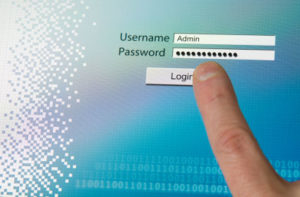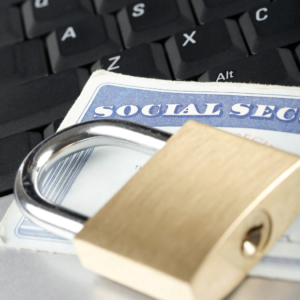A Look Ahead: What Challenges Might We Face with Cyber Security in the Next Year?
I was recently talking to a friend. She called me because there was a big issue at work: a ransomware attack. Basically, a hacker installed software that locked down the entire network, and then demanded that her boss pay $8500. Ultimately, against my recommendations, the only choice they determined they had was to pay the money, and in the process, they learned a very valuable lesson about the importance of backing up company data.
 This is only one of the things that we are going to be facing in the upcoming year. Here are some more that everyone should be aware of:
This is only one of the things that we are going to be facing in the upcoming year. Here are some more that everyone should be aware of:
More Ransomware
We are definitely going to be seeing more ransomware attacks. These cyber criminals are getting even more greedy and they know that the data they are holding for ransom is very valuable. So, expect even higher priced demands.
More Built-In Security
For those in the security industry, there is going to be a lot of work ahead. There are new challenges coming up all of the time, and there are still the old issues that haven’t been solved. People in the industry will have to go way beyond home computers and cell phones. With so many products connecting to the internet, there are millions of ways for cyber criminals to launch an attack.
Intelligence-Based Security
We also can expect to see more artificial intelligence-based security approaches, since the technology we have now just isn’t doing the job. There needs to be more advanced analytics and monitoring, and this will help to prevent more identity theft incidents than ever before. Artificial intelligence just keeps on getting more prominent, and we are seeing computers actually learning without any help from humans. If these computers start to learn enough, they can start helping criminal hackers too.
A More Vulnerable Internet of Things
It’s also a huge possibility that there are going to be big issues in regard to the Internet of Things. Often called “end points” more devices than ever before are connecting to the internet, and more people are using them. This makes us more vulnerable to attacks, so we need to lock this down. Before you buy anything that connects to the internet, you must do your research.
More Phishing, Too
We can also expect more phishing attacks. Hackers are certainly planning more of this, and honestly, these attacks are easy to pull off. Why would they stop?
Credential Theft is Here to Stay
Attacks that occur for the purpose of stealing banking credentials and payment cards will also continue. Don’t ever click on a link in emails, and don’t open any attachment before you open them.
Credential Stuffing
There are billions of stolen credentials floating around the Internet ready for the taking and hackers are plugging this data into well-known websites and gaining access to email, ecommerce, banking, financial, you name it. Change up your passwords.
Security with Smartwear
We are also seeing new threats in regard to wearable devices. These can be bad news for consumers and businesses because they can easily be portals for infecting a home network. Keep these devices updated and change the passwords from the default if you can.
Governments Could be Targets
Cyber-attacks on governments will surely continue, too. These might be inside jobs, or they could be from foreign sources. Even if you think your devices and data is secure, the government might not be. This is another reason you need to have ID theft protection.
Smarter Cars
We also are going to see smarter cars; cars that are more connected than we have ever seen. There are close to 100 ECUs, electronic control units, in cars these days. Some of these are connected to the internet, too, so think of what this might mean. Technically, a hacker could do things like control the car’s brakes. Thankfully, manufacturers are adding more security, but consumers really have to do their homework, too, and understand their cars’ capabilities.
DDoS Attacks
Distributed denial of service attacks, or DDoS attacks, is when manipulation occurs to make something unavailable to people, like a website. We will certainly see more of this.
Disinformation Proliferation
There has never been a time when dis-information was so easily spread by so many, for so many reasons. When government officials at the very top become the primary spreaders of this information, such as dictators in Banana Republic’s and even those in the USA, you know we have a significant problem. Get your facts straight, publications like the New York Times or the Wall Street Journal have no reason to lie. Fact check before you share and spread misinformation.
Conclusion
Here’s the situation; we cannot fully protect ourselves from all of the fraud and scams that are out there, no matter how hard we try. With so many devices that are connecting to the internet, hackers have a ton of opportunity to take advantage of their victims. We need better security and more awareness, so as we move into the new year, keep all of this in mind.
ROBERT SICILIANO CSP, is a #1 Best Selling Amazon author, CEO of CreditParent.com, the architect of the CSI Protection certification; a Cyber Social and Identity and Personal Protection security awareness training program.

 There has been a lot of talk about fake news since the 2016 presidential election, and a lot of controversy from those who spread fake stories for the purpose of influencing hearts and minds and of course the outcome of the election. This is dangerous for dozens of reasons, many of which threaten our democracy and in many cases can lead to people getting killed which has happened many times this year.
There has been a lot of talk about fake news since the 2016 presidential election, and a lot of controversy from those who spread fake stories for the purpose of influencing hearts and minds and of course the outcome of the election. This is dangerous for dozens of reasons, many of which threaten our democracy and in many cases can lead to people getting killed which has happened many times this year.
 The IRS has been telling taxpayers to take more care than before during this time. They has also reminded people that the IRS does not call taxpayers to collect or verify financial information in order to get a faster refund. The IRS also will never email nor text you asking for any information.
The IRS has been telling taxpayers to take more care than before during this time. They has also reminded people that the IRS does not call taxpayers to collect or verify financial information in order to get a faster refund. The IRS also will never email nor text you asking for any information. Let’s talk about Chuck. Chuck is a guy who contacted the Consumerist with a story about his mother. She was a victim of ID theft and froze her credit because that’s what the FTC suggested. However, one of the three major credit bureaus, TransUnion, allowed the hack who had stolen his mother’s ID in the first place, actually lift the freeze! How could something like this happen? Well, it’s much easier than you might think.
Let’s talk about Chuck. Chuck is a guy who contacted the Consumerist with a story about his mother. She was a victim of ID theft and froze her credit because that’s what the FTC suggested. However, one of the three major credit bureaus, TransUnion, allowed the hack who had stolen his mother’s ID in the first place, actually lift the freeze! How could something like this happen? Well, it’s much easier than you might think. Are you a person who is at risk of being scammed by a group like Scarlet Widow? The group generally focuses on large or medium sized businesses including non-profits, such as the Boy Scouts of America, the United Way, and the YMCA. The scammers work by sending staff members emails, and though most people notice immediately that these emails are actually scams, it only takes one email to put a company at risk.
Are you a person who is at risk of being scammed by a group like Scarlet Widow? The group generally focuses on large or medium sized businesses including non-profits, such as the Boy Scouts of America, the United Way, and the YMCA. The scammers work by sending staff members emails, and though most people notice immediately that these emails are actually scams, it only takes one email to put a company at risk.

 In this report, the public was advised to stop using two factor authentication. However, other people suggest that this is the very best way to
In this report, the public was advised to stop using two factor authentication. However, other people suggest that this is the very best way to  Thanks to this type of identity theft, however, we can see that our credit system is very vulnerable. Essentially, it tells us that it is very easy to create a credit file by using this information, and once they do, they can get a loan or credit card with the information of their victims.
Thanks to this type of identity theft, however, we can see that our credit system is very vulnerable. Essentially, it tells us that it is very easy to create a credit file by using this information, and once they do, they can get a loan or credit card with the information of their victims.























